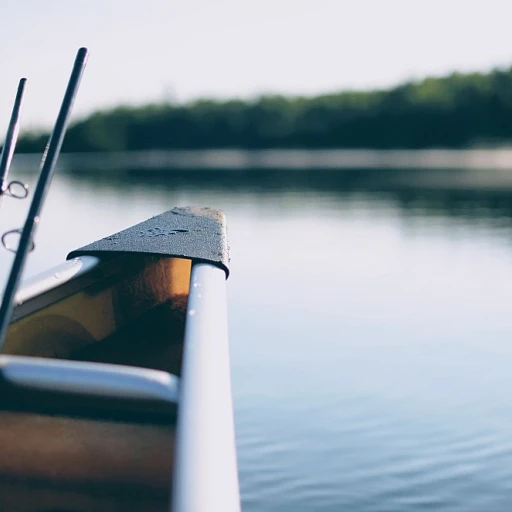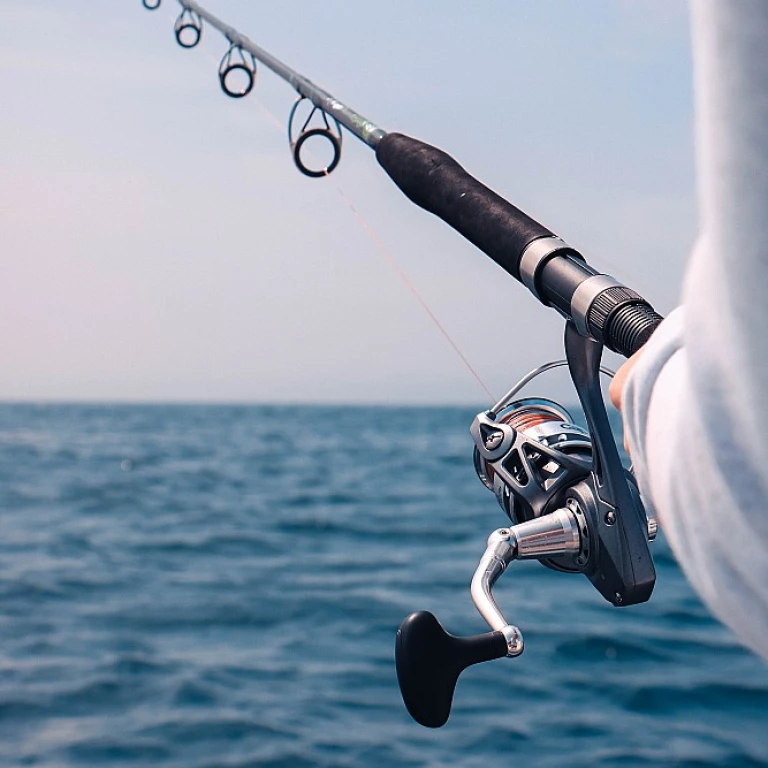Meet the Mighty Goliath Grouper
Unveiling the Majestic Giant
The goliath grouper stands as one of the most astonishing residents of our oceans, boasting an impressive size that never fails to capture attention. With their massive frames and undeniable presence, these sea giants can grow up to eight feet in length and weigh over 800 pounds. They hold a prominent position in the marine hierarchy, often captivating both seasoned anglers and marine enthusiasts alike.
These underwater behemoths have a distinctive appearance characterized by their broad bodies and small, rounded eyes. Their color varies from shades of greenish-brown to gray, often decorated with irregular vertical bars and spots, making each individual uniquely breathtaking. This remarkable fish's size and appearance undoubtedly contribute to its intrigue.
But what exactly makes the goliath grouper such an alluring target for fishermen and conservationists? As you journey deeper into understanding the ecological importance of this species, you'll uncover how it fits into its environment and how crucial efforts are being made to preserve their population. Their lifecycle and the interaction within their habitat provide insights into why the goliath grouper commands such attention in both
modern angling and conservation spheres. The goliath grouper, indeed, holds a unique place within the rich tapestry of marine life, deserving of admiration and respect.
Habitat and Distribution
Exploring the Habitat of the Goliath Grouper
The impressive presence of the goliath grouper can be attributed to its natural habitat, which plays a significant role in its growth and behavior. These remarkable marine giants are primarily found in the warm, shallow waters of the western Atlantic Ocean, ranging from Florida down to the coast of Brazil. This distribution includes the Caribbean Sea and the Gulf of Mexico, where the goliath grouper thrives amidst the ample food resources found in coral reefs, rocky outcrops, and shipwrecks.
The warm temperatures in these areas provide an ideal environment for the goliath grouper to flourish, as they are known to prefer waters between 68°F and 86°F. Their tendency to inhabit areas with underwater structures such as reefs and wrecks provides them shelter and breeding grounds, offering protection and plenty of food sources.
Adaptable by nature, the goliath grouper can also be found in brackish waters and estuaries, showcasing their resilience and versatility. This adaptability allows them to inhabit areas that may have varying salinity levels – an impressive skill that enhances their survival prospects.
Their distribution is significant not only to their survival but also to the wider marine ecosystem. As large aquatic predators, the goliath grouper plays a critical role in maintaining reef health by controlling populations of the species they prey upon.
For those interested in the journey to find the world record yellowfin tuna – a tale that parallels the goliath grouper's fascinating life in the ocean –
read more about it here.
Fishing and Conservation Efforts
Balancing Angling Excitement and Conservation Needs
The thrill of reeling in a Goliath Grouper is undeniable, attracting anglers from around the world eager to test their skills against these colossal fish. However, the sheer size and vulnerable status of Goliath Groupers present unique challenges in balancing recreational fishing with conservation efforts.
Over the years, regulations have been put in place to protect these majestic marine giants, ensuring that their populations remain robust and healthy. The implementation of strict size and catch limits, as well as seasonal restrictions, reflects a growing understanding of the importance of conserving these fish. It's crucial for anglers to familiarize themselves with local fishing regulations and practice catch-and-release techniques to minimize stress and injury to the fish.
Conservation efforts also extend beyond the waters, with many organizations working tirelessly to advocate for the Goliath Grouper's protection. Through education and outreach, these groups aim to raise awareness about the significance of maintaining their natural habitats and populations.
For those looking to experience the adrenaline rush of encountering a Goliath Grouper while respecting its ecological role, engaging with sustainable fishing practices is essential. Additionally, understanding how these fish perceive their environment can enhance your fishing strategy and contribute to more successful and responsible angling adventures. Discover more about
how fish see the underwater world to improve your technique and ensure a respectful interaction with these remarkable creatures.
The Life Cycle of a Goliath Grouper
Understanding the Growth Stages of Goliath Groupers
The goliath grouper, known for its immense size and presence in the ocean, follows a fascinating life cycle that contributes to its growth and survival. Like many other marine species, goliath groupers undergo distinct developmental phases. After a female lays thousands of eggs, the journey of a new life begins when these eggs hatch into larvae. During this vulnerable larval stage, groupers are left to drift with the currents, facing natural predators and environmental challenges.
Once they survive the precarious larval period, they transition into the juvenile stage. At this point, goliath groupers seek refuge in estuaries and mangroves, a factor that highlights the importance of preserving these crucial habitats, discussed earlier in our exploration of their habitat and distribution. Here, young groupers take advantage of the rich feeding grounds and relative safety provided by the intricate root systems.
As they mature, groupers gradually venture into deeper waters, settling in coral reefs and rocky areas, where they assume their role as apex predators. It's not uncommon for these creatures to live up to several decades, reaching their full size potential during adulthood. Throughout their lives, goliath groupers contribute significantly to the marine ecosystem's balance, as they help control fish populations and maintain the health of coral reefs.
Life cycle insights, fishing gear, and techniques play a vital role in understanding and conserving this species, illuminating the path for sustainable practices in recreational fishing efforts mentioned in previous sections. By appreciating the complexities of the goliath grouper's life, enthusiasts are empowered to advocate and practice responsible fishing, ensuring that these giants of the ocean continue to grace our waters for generations to come.
Fishing Gear and Techniques
Mastering the Art of Catching a Giant
To successfully fish for the impressive goliath grouper, having the right gear and using proper techniques are paramount. The sheer size and strength of these colossal marine creatures make them a formidable challenge, demanding both skill and patience from anglers.
Gearing Up for Goliath Grouper Fishing
Fishing for these massive beauties requires heavy-duty equipment. An angler must select a robust fishing rod capable of withstanding significant pressure, paired with a high-quality reel designed for heavy lifting. Monofilament or braided fishing lines with a high breaking strain are ideal choices, as they minimize the risk of line breakage. For those intense tug-of-war battles, a leader line of about 100 pounds is recommended.
Baiting Techniques and Lure Selection
When targeting the goliath grouper, live bait is often preferred. Large baits like blue runners, mullet, or even small bonito can entice a giant grouper to strike. However, artificial lures also have their place, with large jigs being particularly effective in mimicking prey movements. Knowing how to present your chosen bait or lure near a grouper's habitat—often around reefs, wrecks, or mangroves—can increase your chances of a successful catch.
Reeling in a Titan
Once the goliath grouper takes the bait, the real challenge begins. Be prepared for a robust fight as groupers are notorious for their strength. It's essential to counter their powerful runs with steady pressure and skillful maneuvering. Anchoring techniques, such as securing the line to a cleat, can provide additional leverage during particularly challenging catches.
While catching a goliath grouper can be an exhilarating experience, it's crucial to follow local regulations and conservation guidelines. Anglers often release these gentle giants back into their relatively shallow habitats, promoting their sustainability and allowing more enthusiasts to experience their majesty firsthand.
The Goliath Grouper in Marine Ecosystems
Role of the Goliath Grouper in Marine Food Webs
The goliath grouper, with its impressive size and presence, is more than just a sought-after catch; it plays a crucial role within marine ecosystems. Acting as both predator and participant in the intricate food webs, this magnificent fish contributes to the balance of its natural environment.
As a top-tier predator, the goliath grouper helps regulate the populations of smaller fish and invertebrates, preventing any single species from dominating. This predatory behavior supports the overall health of coral reefs and mangroves, fostering biodiversity and ensuring the stability of these vibrant marine habitats.
Interestingly, the goliath grouper itself is a target for few natural predators. Their substantial size and weight provide a degree of protection, allowing them to mature and maintain their important role in the marine ecosystem for years. Maternal and nesting grounds for these fish are critical, as they ensure the continuation of their species and, by extension, the health of their habitats, as discussed in their life cycle.
However, it’s essential to understand that human activity has impacted the delicate balance these ecosystems rely on. Bycatch, overfishing, and habitat degradation have threatened the goliath grouper in various regions. Conservation efforts, as previously discussed, are integral to protecting not just the goliath grouper, but the wider marine ecosystems they inhabit.
In order to maintain the ecological balance and support the intricate food webs, fishing practices and habitat conservation must work hand-in-hand with the biology and life cycles of keystone species like the goliath grouper. Their survival is not just pivotal for anglers who seek the thrill of encountering these gentle giants but is also essential for the health and diversity of our oceans for generations to come.

